Unveiling the Secret: How Should a Backpack Fit for Comfort
Embarking on any adventure requires the perfect gear, and knowing how a backpack should fit is the foundation of a comfortable, pain-free journey. Explore the secrets of a well-fitted backpack!
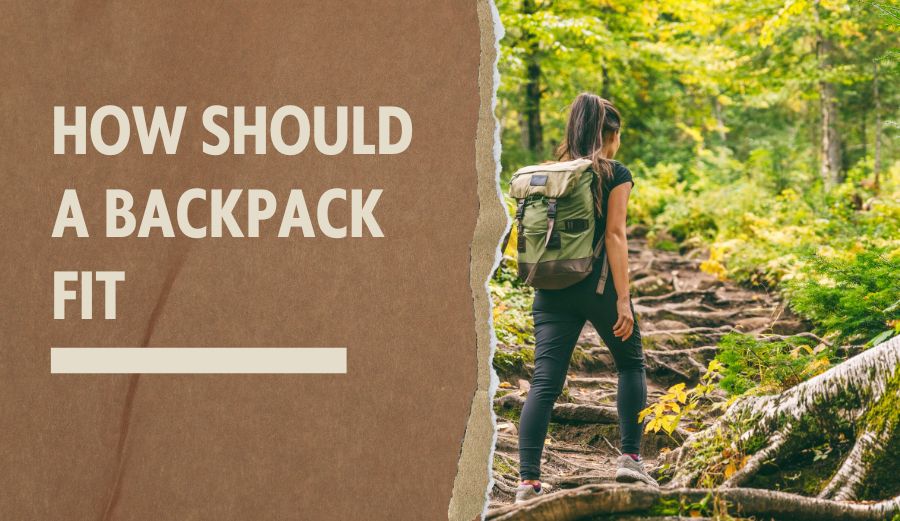
Picture this: You’re standing at the trailhead, the crisp wilderness air filling your lungs, excitement coursing through your veins. You’re all set for that epic outdoor adventure. But wait!
There’s one crucial element you might be overlooking – the fit of your backpack. Believe it or not, understanding “How should a backpack fit” can either elevate your adventure to new heights or turn it into an uncomfortable ordeal.
This guide will unlock the secrets of why a perfectly fitting backpack is your best friend in the great outdoors. So, let’s delve into the world of How should a backpack fit and discover how it can truly make or break your journey.
Table of Contents
ToggleThe Foundation: Measuring for the Right Fit

Torso Length Matters More Than Height
When selecting the perfect backpack, your torso length is critical to elevate your outdoor experience or turn it into a painful ordeal. While many people focus on their height when choosing a backpack, the torso length truly matters. Here’s why:
Why Torso Length is Critical:
Your torso length determines how the backpack’s weight is distributed on your body. A bag that fits your torso length well will ensure that the load is carried by your hips, the body’s natural load-bearing structure. This reduces strain on your shoulders, neck, and back, allowing you to hike, travel, or explore comfortably for hours.
Now, let’s dive into the essential steps on how to measure your torso length at home:
Measuring Your Torso Length at Home:
Measuring your torso length is a straightforward process that anyone can do at home with the help of a friend and a flexible tape measure:
- Maintain an upright posture and gently lower your head forward. You’ll feel a bony bump where your neck meets your shoulders. This is your 7th cervical (C7) vertebra, marking the top of your torso.
- Place your hands on your hip bones (iliac crest) with your thumbs pointing backward and index fingers forward. Imagine a line between your thumbs, marking the bottom of your torso measurement.
- Have your friend measure the distance between the C7 vertebra and the imaginary line between your thumbs. This measurement is your torso length—the critical number to choose the right backpack size.
While measuring at home is a great starting point, nothing beats the expertise of a pack-fit specialist at your local outdoor store. These experts can visually assess your unique fit requirements, ensuring you find the perfect backpack for your adventures.
Finding Your Pack Size
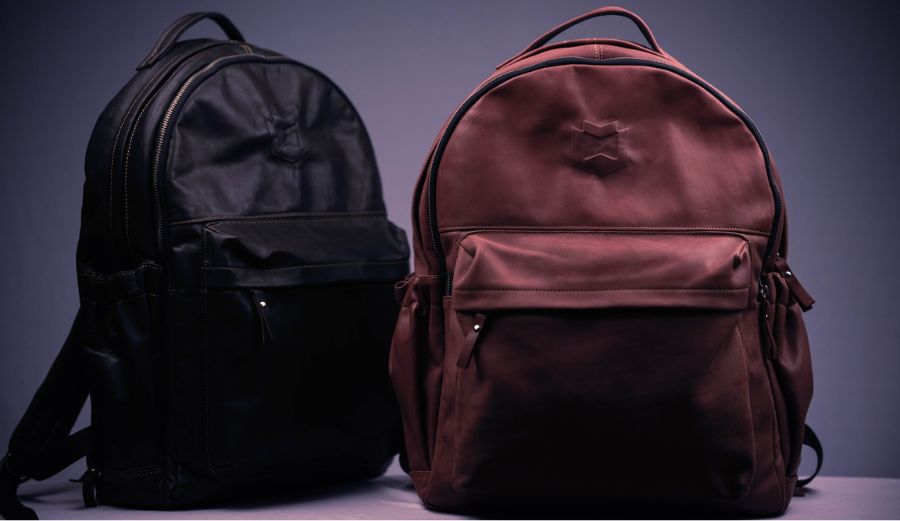
Pack Sizes Decoded
Now that you understand the significance of torso length, it’s time to decode backpack sizes and find the one that matches your unique measurements. Backpacks typically come in small, medium, and large sizes, but how do you know which size is right for you? Let’s break it down:
Pack Sizes and Torso Length:
- Small: Small backpacks are designed for those with a torso length of about 15.5 inches (39 cm).
- Medium: A medium-sized backpack is likely your best fit if your torso length falls between 16 to 17.5 inches (41 to 44 cm).
- Large: A large backpack is your ideal choice for torso lengths exceeding 20 inches (51 cm).
It’s essential to note that these sizes can vary slightly between different backpack brands. Therefore, always refer to the size chart provided by the specific brand you’re interested in. This ensures you get a backpack matching your torso length and brand preference.
Trying Before Buying:
While knowing your torso length and the associated size is a great start, nothing beats physically trying on backpacks. The fit and comfort of a bag can vary based on its design, even within the same size category. Here’s a pro tip: Visit your nearest outdoor store and try on multiple backpacks in various sizes.
Remember, your backpack is a long-term adventure companion. Don’t be tempted by a great deal or a backpack’s appearance alone. Prioritize finding the one that fits you like a glove. The following section will delve into adjusting your backpack for maximum comfort.
The Hip Connection: Ensuring a Solid Foundation
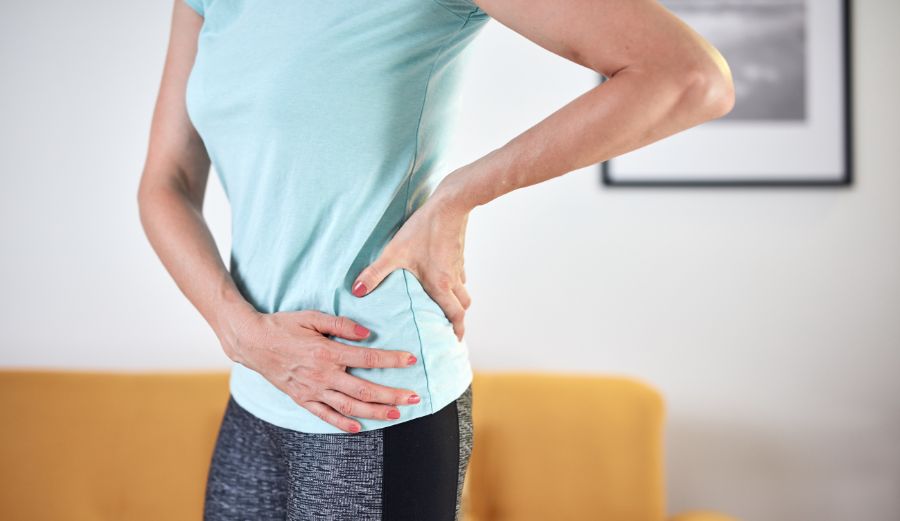
Carrying the Load: Why Hipbelt Fit Matters
The hipbelt of your backpack plays a crucial role in ensuring your comfort during outdoor adventures. It’s the unsung hero responsible for distributing the weight of your pack evenly and transferring most of the load to your hips, where your body’s strongest muscles can easily handle it.
Why Hipbelt Fit Matters:
Imagine carrying a heavy backpack with all the essentials for your journey. Now, picture that weight resting solely on your shoulders. Sounds uncomfortable? That’s where the belt comes in. When fitted correctly, it wraps snugly around your hips, taking the load off your shoulders and upper back. In fact, roughly 80% of the weight should be supported by your hips, with the remaining 20% on your shoulders.
Measuring Your Hip Size:
- To ensure your hip belt fits perfectly, you’ll need to measure your hip size accurately. Grab a flexible tape measure and wrap it around the top of your hips, hugging the iliac crest slightly higher than your beltline.
- Ensure the tape is comfortably snug, avoiding excessive tightness, and record the measurement carefully.
The Snug Yet Comfortable Fit:
Now that you have your hip measurement, it’s time to ensure your hip belt offers the ideal fit:
- Put your backpack on, and move the hip belt until the padding aligns with the top of your hip bones, right on your iliac crest. It should neither sit too high nor too low.
- Fasten the hip belt buckle securely, but avoid overtightening. It should be snug and secure without causing discomfort or pinching your hips.
- Check the padded sections of the hipbelt. They should rest comfortably on the top of your hips. If they don’t, readjust the shoulder straps and hip belt tension until you find the sweet spot.
- Ensure that the belt padding extends slightly beyond the front point of your hipbones. You should also have at least one inch of clearance on either side of the center buckle. Consider contacting the retailer to inquire about a smaller belt if you have less.
Remember, your hip belt is your lifeline when carrying a loaded backpack comfortably. It’s the foundation of your pack’s fit, so take the time to get it right. In the next section, we’ll explore how to fine-tune the fit of your shoulder straps for maximum comfort.
Adjustment Mastery: Tailoring Your Backpack's Fit

Fine-Tuning Your Comfort Zone
Now that you’ve covered the essentials of measuring, sizing, and ensuring a snug hip belt fit, it’s time to delve into adjusting your backpack for maximum comfort. A well-fitted pack is your companion for the long haul, and fine-tuning its fit can make all the difference in your outdoor experience.
The Role of Adjustable Suspension Systems:
Many modern backpacks come equipped with adjustable suspension systems to accommodate various torso lengths and individual user preferences. These systems allow you to customize your pack’s fit to your unique body shape, enhancing comfort and reducing strain. However, it’s crucial to remember that no amount of adjustment can compensate for an incorrectly set torso length. Therefore, the torso length should always be your first and most vital adjustment.
Adjusting Torso Length:
- If you’re using a backpack with an adjustable suspension system, setting the torso length correctly is essential. This adjustment is the foundation upon which all other fit adjustments are built.
- If, at any point, you find that your other fit adjustments do not work as expected, it’s essential to re-check and reset the torso length. No amount of adjustment straps can make up for an improperly configured adjustable suspension system.
- If you encounter difficulties or uncertainties during this process, don’t hesitate to seek assistance from professionals at an outdoor store. They can provide invaluable guidance and ensure your backpack is perfectly adjusted to your body.
The Four Primary Adjustment Straps:
- Hipbelt: As discussed earlier, the belt plays a pivotal role in bearing the weight of your backpack. Ensure it rests comfortably on your iliac crest and is snug but not overly tight.
- Shoulder Straps: These should wrap closely around your shoulders but should not bear significant weight. The anchor points of your shoulder straps on the backpack should align 1 to 2 inches below the top of your shoulders, near the top of your shoulder blades.
- Load-Lifter Straps: These straps connect the top of the shoulder harness to an anchor point near the top of the back panel. When adjusted correctly, they form an angle of about 45 degrees toward the pack body, providing a snug, not stiff, tension.
- Sternum Strap: Slide the sternum strap to a comfortable height across your chest, approximately an inch below your collarbones. Buckle and tighten it to set the shoulder straps at a width that allows your arms to move freely. Avoid overtightening, as it can distort the overall fit of your harness.
With these adjustments mastered, your backpack will become an extension of your body, and you’ll be ready for your outdoor adventures with confidence. The following section will discuss fine-tuning your fit while on the trail to alleviate discomfort and ensure a seamless journey.
Perfecting the Fit: Step-by-Step Adjustments
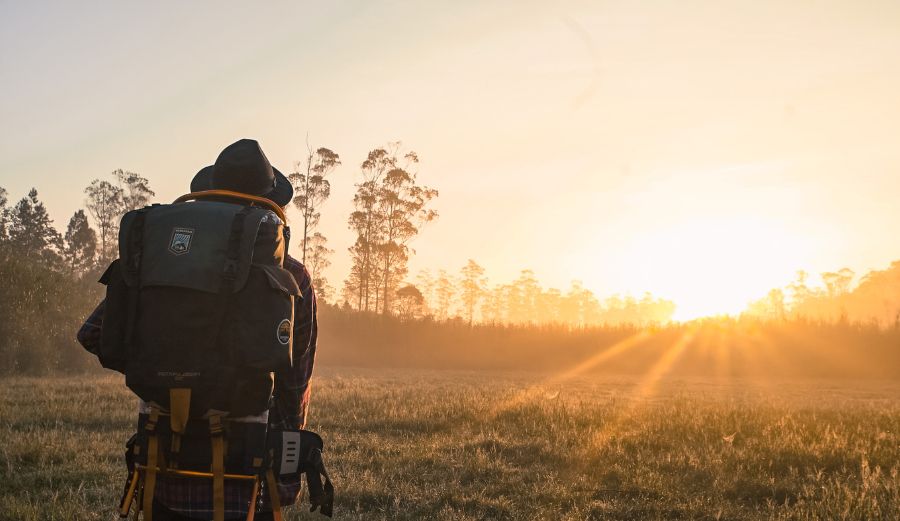
The Road to Backpacking Bliss
Congratulations, you’re on your way to achieving the perfect backpack fit! In this section, we’ll guide you through a step-by-step process that will transform your backpack into a tailored, comfortable extension of your body. Remember, getting your pack fit just right is the key to a successful outdoor adventure.
Step 1: Hipbelt Adjustment
- The hip belt is your backpack’s foundation, distributing most of the load onto your hips, where your body is most muscular.
- Put your backpack on and adjust the hip belt until the padding comfortably hugs the top of your hipbones, also known as the iliac crest.
- Ensure the hip belt sits neither too high nor too low on your hips; it should align perfectly with your iliac crest.
- Fasten the hip belt buckle securely, but avoid overtightening it. It should be snug without causing discomfort or pinching your hips.
- Check the padded sections of the hip belt to ensure they sit on top of your hips, and re-adjust the shoulder straps and hip belt tension to find the sweet spot.
- The belt padding should extend slightly beyond the front point of your hipbones, and you should have at least one inch of clearance on either side of the center buckle. If you have less, consider checking if a smaller hip belt is available from the manufacturer or retailer.
Step 2: Shoulder Strap Adjustment
- Shoulder straps should wrap closely around your shoulders, but remember, they should not bear the significant weight of your backpack.
- Gently tug the ends of the shoulder straps downward and backward to secure them snugly.
- Ensure that the anchor points of your shoulder straps on the backpack align approximately 1 to 2 inches below the top of your shoulders, roughly at the top of your shoulder blades.
- Experiment with different tensions by tightening and loosening the straps in small increments to relieve pressure points or discomfort during your hike.
Step 3: Load-Lifter Strap Adjustment
- Load-lifter straps link the upper part of the shoulder harness to an attachment point near the back panel’s upper section.
- When correctly adjusted, they should form an angle of about 45 degrees toward the pack body, providing a snug yet not overly stiff tension.
- Avoid overtightening these straps, as excessive tension may lead to pinching in the shoulder joints and discomfort.
- The goal is to achieve a comfortable and balanced fit without creating gaps at the top of your shoulder harness.
Step 4: Sternum Strap Adjustment
- Slide the sternum strap to a comfortable height across your chest, ideally about an inch below your collarbones.
- Fasten and adjust the sternum strap to position the shoulder straps at a width that permits unrestricted arm movement.
- Be cautious not to overtighten the sternum strap, as it can distort the overall fit of your harness, constrict chest muscles, and restrict breathing.
With each strap expertly adjusted, you’re well on your way to a comfortable and well-fitted backpack. In the next section, we’ll explore the art of fine-tuning your fit while on the trail, allowing you to enjoy your outdoor experience to the fullest.
On the Trail: Maintaining Your Ideal Fit
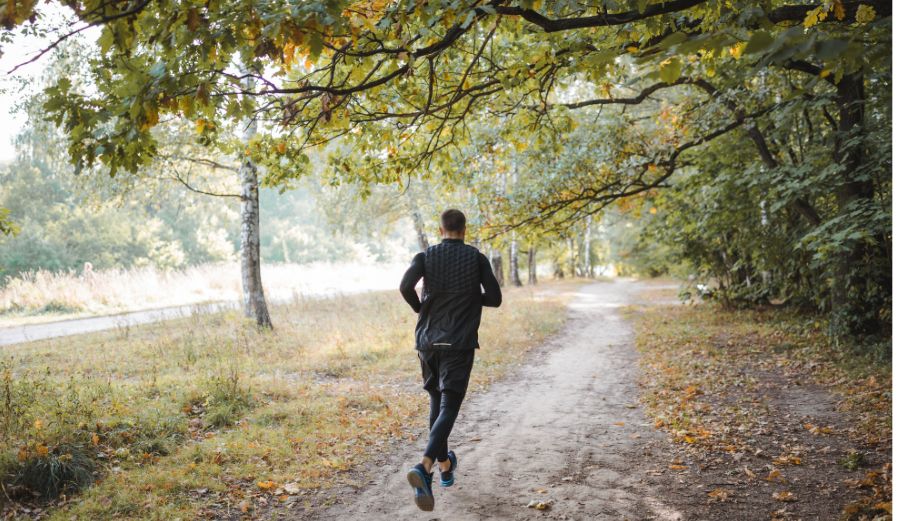
Adaptation and Optimization
Congratulations, adventurer, on achieving the ideal fit for your backpack! But remember, your journey doesn’t stop here. This section will explore the importance of maintaining that perfect fit while on the trail and enjoying the great outdoors.
The Journey Continues
It’s time to hit the trail once you’ve set your backpack’s fit to perfection. However, the dynamic nature of outdoor adventures means that your body and backpack relationship will evolve. Here’s what you need to know:
Continuous Strap Adjustments
- The key to a comfortable hike is flexibility. Your legs are equipped with some of the body’s strongest muscles, so use them to your advantage.
- As you trek through changing terrain and shifting loads, you must adjust your backpack’s straps on the go.
- Experienced hikers know that slight tweaks to the tension in your hip belt, shoulder straps, load-lifter straps, and sternum straps can alleviate pressure points and ensure lasting comfort.
Relieving Pressure Points
- During extended hikes, pay attention to your body. If you start feeling discomfort or pressure points, don’t hesitate to make adjustments.
- Loosen or tighten your straps strategically to shift the weight distribution and give different muscle groups a rest.
- Remember, your goal is to maintain a comfortable and balanced fit that lets you focus on the beauty of the trail, not discomfort.
Managing Load Fatigue
- Load fatigue can set in after several miles on the trail. A common tactic is to tighten your shoulder straps and loosen the hip belt to change how the weight is distributed.
- Listen to your body and experiment with different adjustments. Sometimes, even a small change can make a big difference in your comfort level.
Body Position Matters
- Pay attention to your body position as you hike. Leaning slightly forward can help you maintain balance and keep the load feeling manageable.
- Remember to take breaks and remove your backpack when you stop. Give your hardworking back and shoulders a chance to rest while you stretch your muscles.
In the world of backpacking, adaptability is critical. Keep your backpack’s fit in mind as you explore nature’s wonders. Don’t hesitate to make those tiny adjustments that can turn a good hike into an unforgettable adventure. Happy trails!
The Lightweight Advantage: Choosing Wisely
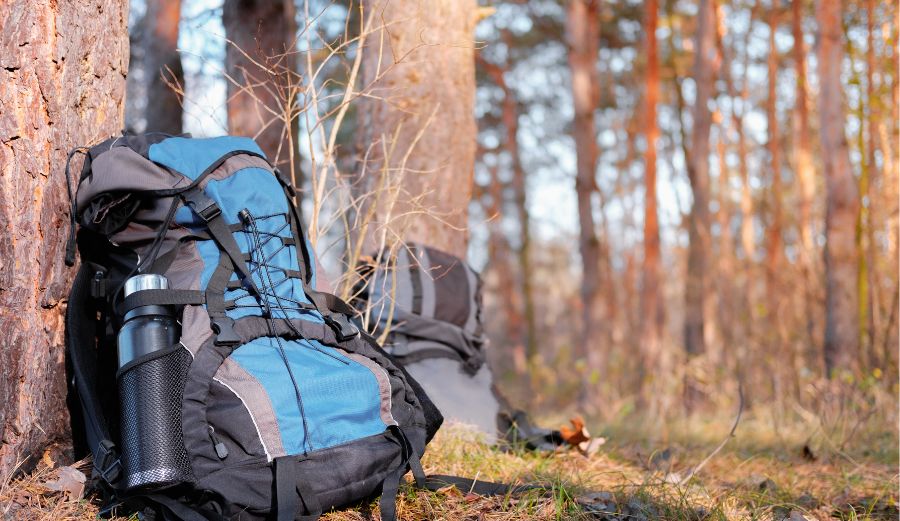
Packing Smart for a More Enjoyable Adventure
As you embark on your outdoor escapades, one final piece of the puzzle remains – choosing the right backpack. In this section, we’ll delve into the importance of selecting a suitable bag with suitable capacity and features while emphasizing the merits of traveling light.
The Right Capacity and Features
Choosing the perfect backpack isn’t just about size but also features. Here’s why it matters:
Pack for Your Purpose
- Consider the nature of your adventure. Are you heading out for a day hike, a weekend getaway, or an extended trek? Your backpack’s capacity should align with your trip’s duration.
- A larger capacity is sometimes better. Carrying an oversized pack for a short journey means extra weight and unnecessary bulk.
Travel Light, Travel Right
- The golden rule of backpacking is to keep your load as light as possible. A lighter pack means less strain on your body and a more enjoyable adventure.
- Prioritize items based on their necessity. Leave behind non-essentials and opt for multipurpose gear.
- Remember, every ounce you shed from your pack is a step toward enhanced comfort on the trail.
Less is More: Features Matter
- While extra features can be enticing, they also add weight. Evaluate each feature’s utility and relevance to your adventure.
- Opt for simplicity. Look for backpacks that offer essential features without unnecessary add-ons.
- Streamlined designs often lead to more comfortable and efficient trips.
In backpacking, your gear choice can significantly impact your experience. By selecting a backpack with a suitable capacity, prioritizing a lightweight approach, and focusing on essential features, you’re setting yourself up for a more enjoyable adventure. Remember, the key is to pack bright and travel light – your back and shoulders will thank you.
Final Words: Finding Your Perfect Fit
One thread holds paramount importance in the grand tapestry of outdoor adventures: How should a backpack fit? This journey of discovery has illuminated the path to backpacking bliss, where your bag becomes an extension of your body. Let’s revisit our key takeaways:
1. Torso Length Reigns Supreme: The cornerstone of a well-fitting backpack begins with measuring your torso length, not your height. It’s the compass guiding you to the correct pack size.
2. The Hip belt – Your Stalwart Companion: A snug and properly positioned hip belt is your trusty sidekick on the trail. It takes on the lion’s share of your pack’s weight, ensuring comfort and stability.
3. Adjust and Adapt: Continuous adjustments are the secret sauce of backpacking comfort. Fine-tune your straps, heed your body’s cues, and embrace the dynamic nature of fit optimization.
4. The Quest for Perfection: Finding the ideal backpack fit demands patience and effort. But once you’ve unlocked it, your outdoor escapades will be elevated.
As we bid adieu, let the knowledge of How should a backpack fit be your compass, guiding you through each adventure. With the right fit, embark on your next journey with unwavering confidence. Like a friend, your backpack will be by your side, ensuring that every step is one of comfort and delight.
